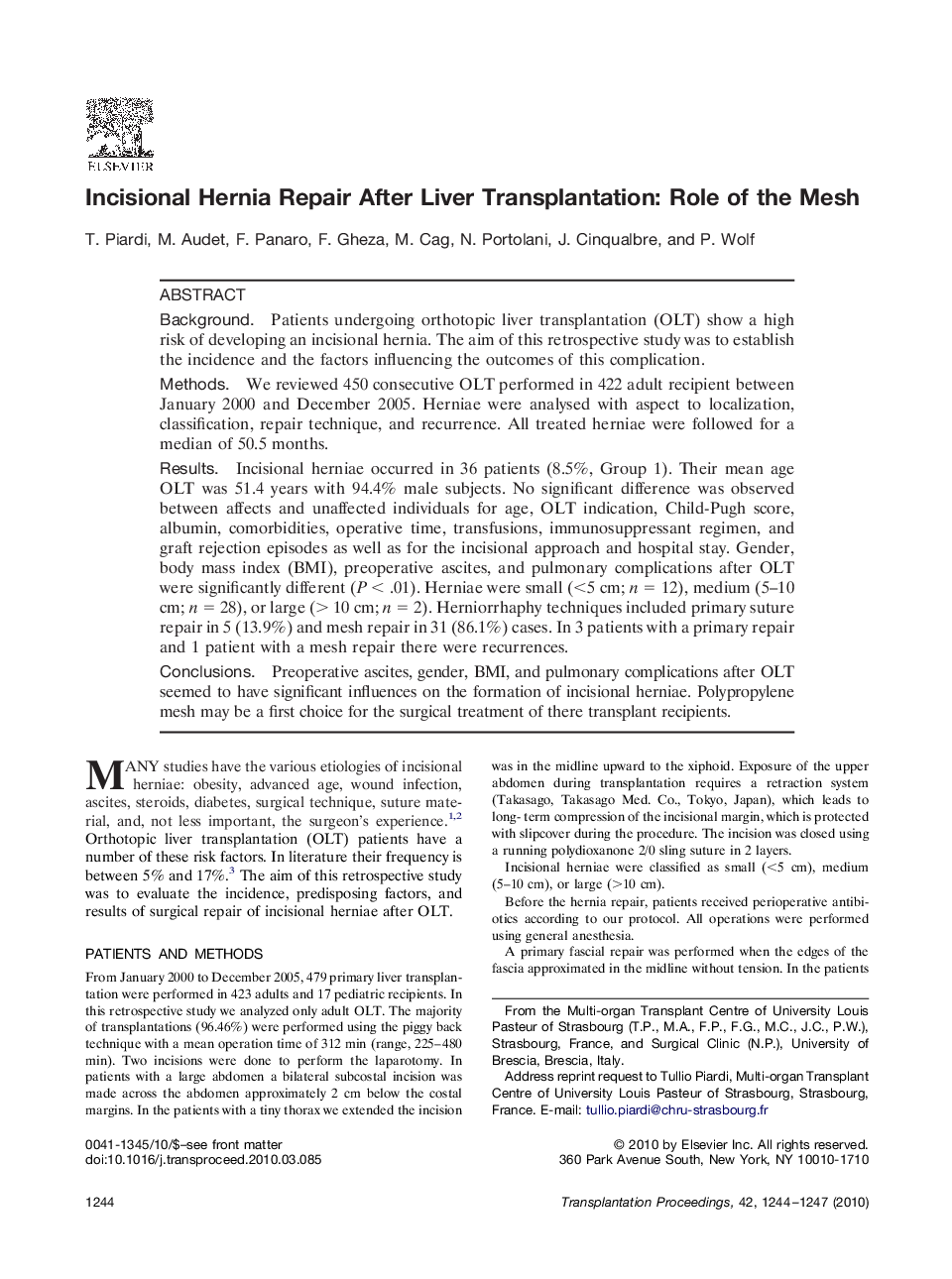| Article ID | Journal | Published Year | Pages | File Type |
|---|---|---|---|---|
| 4259638 | Transplantation Proceedings | 2010 | 4 Pages |
BackgroundPatients undergoing orthotopic liver transplantation (OLT) show a high risk of developing an incisional hernia. The aim of this retrospective study was to establish the incidence and the factors influencing the outcomes of this complication.MethodsWe reviewed 450 consecutive OLT performed in 422 adult recipient between January 2000 and December 2005. Herniae were analysed with aspect to localization, classification, repair technique, and recurrence. All treated herniae were followed for a median of 50.5 months.ResultsIncisional herniae occurred in 36 patients (8.5%, Group 1). Their mean age OLT was 51.4 years with 94.4% male subjects. No significant difference was observed between affects and unaffected individuals for age, OLT indication, Child-Pugh score, albumin, comorbidities, operative time, transfusions, immunosuppressant regimen, and graft rejection episodes as well as for the incisional approach and hospital stay. Gender, body mass index (BMI), preoperative ascites, and pulmonary complications after OLT were significantly different (P < .01). Herniae were small (<5 cm; n = 12), medium (5–10 cm; n = 28), or large (> 10 cm; n = 2). Herniorrhaphy techniques included primary suture repair in 5 (13.9%) and mesh repair in 31 (86.1%) cases. In 3 patients with a primary repair and 1 patient with a mesh repair there were recurrences.ConclusionsPreoperative ascites, gender, BMI, and pulmonary complications after OLT seemed to have significant influences on the formation of incisional herniae. Polypropylene mesh may be a first choice for the surgical treatment of there transplant recipients.
